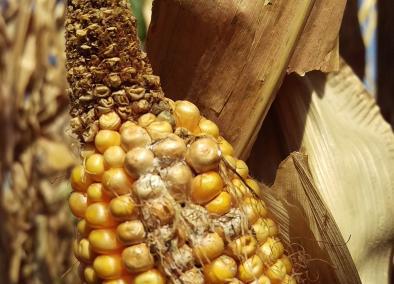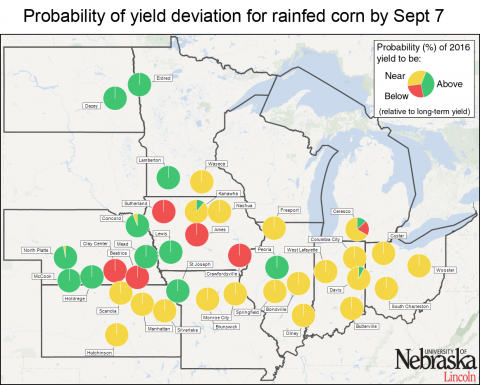Forage, Feed, and Grazing Restrictions for Row Crop Herbicides
November 1, 2016
As the end of corn harvest nears, some producers will soon be turning their cattle into corn stalks or cover crops to graze. Before taking this step, take time to review the labels from in-season and fall-applied herbicides for any grazing restrictions.
Harvest 2016 — When Corn Yields are Below Expectations
October 14, 2016
A review of 2016 growing conditions across Nebraska sheds light on a number of factors that may have contributed to reduced yield in individual fields. An understanding of these factors may be helpful when selecting seed for 2017.
Ear and Stalk Rot Diseases Becoming More Common in Corn Fields
October 13, 2016
Ear rot diseases have been observed and stalk rot diseases are becoming increasingly common. It’s important to scout for stalk rot diseases now to determine which fields are at greatest risk of lodging and should be harvested first. Although it is unknown if ear rot diseases are widespread, it’s also important to scout for ear rot diseases to know how to better handle affected grain at harvest to prevent or minimize impacts on grain quality.
Help Us Identify Yield-Limiting Factors in Nebraska Soybean Fields
October 5, 2016
Nebraska soybean producers are being asked to answer a survey about their soybean fields and contribute to a benchmark study of current soybean production in Nebraska. Researchers from 10 north central states, including Nebraska, are collecting the data to identify factors that may be impeding growers from reaching full yield. See what they've learned in the first two years of the study and how they hope to use the information.
Yield Forecast Center Predicts Corn Yields Well Below USDA-NASS Projections
September 22, 2016
End-of-season yield forecasts for irrigated and dryland corn across eight states in the Corn Belt indicate above average yields for 2016, but not the record-breaking yields predicted by USDA in their September forecast. While two states are forecast to have yields below the 10-year average (-1% to -4%), the remaining states showed above average yields ranging from 1% to 21% above the 10-year average.
Corn Yield Forecasts as of Sept. 7
September 8, 2016
The Sept. 7 corn yield forecasts show a majority of the irrigated sites expected to produce above normal, but not record-breaking yields. Forecasted yields for rainfed sites are more variable, although most are expected to be near normal. Above average yields are expected for 11 of the 37 sites studied and below-normal yields are forecast for five sites.
Corn Yield Forecasts for Aug. 24, Including State Forecasts
August 25, 2016
August 24 corn yield forecasts for 41 sites across the Corn Belt showed many near or above average. At Nebraska rainfed corn sites there is a high probability (>75%) of above-average yield at the North Platte and central east sites and a high probability (>75%) of below-average yield at the southwestern and southeastern Nebraska sites (McCook, Clay Center, and Beatrice). In irrigated corn there was a high probability of near or above average yields for all except the Beatrice site. See the story for data tables and discussion.
Corn Ear Formation Issues Likely Correlated With the Loss of the Primary Ear Node
August 19, 2016
UNL agronomists and educators responding to grower questions surveyed a number of corn fields this week and found a range of corn ear issues: short husks, dumbbell-shaped ears, and multiple ears per node. The article describes and discusses the situation, potential stress agents, and the development of corn. It also encourages growers to check their fields pre-harvest to better assess causes of potential yield loss.









